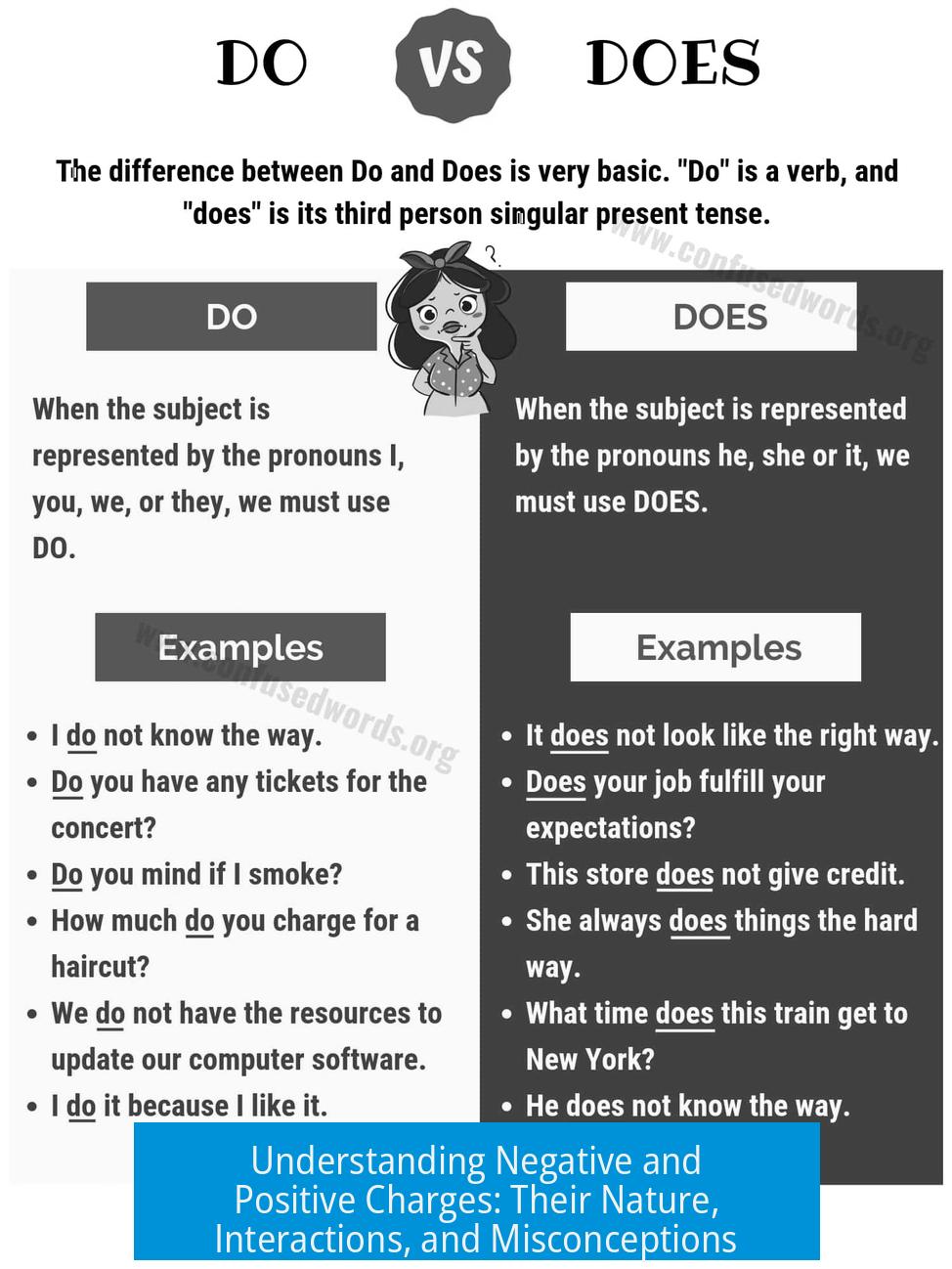What Does “Negative and Positive Charges” Even Mean?
Negative and positive charges are fundamental, intrinsic properties of certain particles that dictate how they interact through electric fields. They represent two types of electric charge which cause particles to attract or repel each other, shaping the behavior of matter and electromagnetic phenomena.
1. Nature and Origin of Electric Charges
Electric charge is a fundamental property with no deeper known cause. Scientists accept positive and negative charges as primitive concepts; why these charges exist remains an open question in physics. It is a basic law that particles carry these charges and interact via attraction and repulsion.
Historical convention determines the naming: protons are positive, electrons are negative, but this assignment is arbitrary. Benjamin Franklin introduced the idea of positive charge flow long before electrons were discovered. Despite electrons actually moving in a circuit, we still say current flows in the “positive” direction due to tradition.
- Charges are intrinsic, conserved quantities, part of particle identities known as quantum numbers.
- The terms “positive” and “negative” arose historically, not naturally.
2. Physical Meaning of Charges and Their Interactions
Particles with charge create electric fields around them. The sign of the charge determines the field’s direction:
- Positive charges produce fields that point outward.
- Negative charges produce fields that point inward.
This field exerts forces on other charges, following Coulomb’s law. Opposite charges attract; like charges repel. When multiple charges exist, their fields combine, leading to forces that rearrange charges to lower the system’s energy.
In circuits, electrons (negative charges) move from higher to lower electron density, creating current. Though protons are positive, they remain fixed within atomic nuclei and do not move during electric conduction.
3. Microscopic and Quantum Perspective
At the subatomic level, a proton’s positive charge arises from its three quarks, each with fractional charges: two “up” quarks with +2/3e, one “down” quark with -1/3e, totaling +1 charge (e = elementary charge).
The electron is a fundamental particle with no known smaller parts. It manifests as an excitation of the electron field — a quantum field permeating space.
From quantum field theory (QFT), charges can be seen as local excitations or “excitons” in electromagnetic phase space. These excitons correspond to particles and their interactions with the electromagnetic field.
- Different quantum fields produce various particles, like electrons and photons.
- The Higgs field influences mass and works with other matter fields, including those for quarks.
- Gravity remains elusive under this framework and resists quantization.
4. Simplified Classical View: Charges as Electron Presence or Absence
Simplifying, negative charge corresponds to the presence of electrons. Positive charge is effectively a relative lack of electrons.
This is similar to how darkness is the absence of light. Positive charge is not a “thing” itself but a deficit of negative charges in a region. This view helps explain current flow, where electrons move toward regions with fewer electrons, enabling electric current.
5. Common Misconceptions and Metaphors
Some cultural or metaphorical ideas link positive charge to emission or masculine traits and negative charge to reception or feminine traits. These views are symbolic and do not describe physical reality.
Key Takeaways
- Positive and negative charges are fundamental, conserved properties that determine electromagnetic interactions.
- The sign assignment (positive or negative) is arbitrary and rooted in historical convention.
- Charges generate electric fields; opposite charges attract while like charges repel.
- At the quantum level, charges arise from the composition of particles and excitations in quantum fields.
- Negative charge represents electrons; positive charge is their relative absence in classical terms.
- The ultimate reason why charge exists remains unknown and is treated as a basic physical law.
What do negative and positive charges actually represent in particles?
Negative and positive charges are basic properties of particles. A positive charge pushes electric fields outward, while a negative charge pulls them inward. These charges cause attraction or repulsion between particles.
Why are electrons negative and protons positive?
The signs are chosen by historical convention. Benjamin Franklin assigned positive to one type and negative to the other without knowing electrons. The choice is arbitrary but fixed for consistency in physics.
How do charges cause forces between particles?
Charges create electric fields. Opposite charges attract because their fields pull together. Like charges repel as their fields push away. This behavior comes from the electric field directions each charge sets up.
Is positive charge a real particle or just a lack of electrons?
Positive charge often means fewer electrons in an area—a relative absence of negative charge. It’s not a separate particle flowing in circuits like electrons, which carry negative charge by their movement.
What determines a proton’s positive charge at the particle level?
A proton’s positive charge comes from its quarks. Two up quarks have charges of +2/3 each, and one down quark has –1/3. Their combined charge makes the proton positive.





Leave a Comment